 Interview conducted by Olivia FrostApr 4 2022
Interview conducted by Olivia FrostApr 4 2022In this interview, Dr. David Honigs, Ph.D, the Field Applications Scientist at PerkinElmer, Inc., talks to AZoM about NIR applications for poultry meat processing and rendering.
Please can you introduce yourself?
I am Dr. David Honigs, and I work as a field application scientist for PerkinElmer. I will be differentiating between products meant primarily for human consumption, products meant for pet food products and animal feed products.
Meat consumption applies equally to humans and animals. I like to think about it as being the right and the left side of the knife. When you are processing meat on one side of the blade, it is for human consumption, and on the other side, it is for animal consumption. Although, I think that designation is being blurred more and more as pet food quality keeps getting better.
Could you tell us a bit about the challenges of carrying out measurements on meat products?
Whenever conducting meat measurements, one of the difficulties that we have to deal with is the fact that it can look one way, but if, for example, you have got a cut of pork, you can see all of the structure and that the fat content in one place is much different than the fat content in another place.
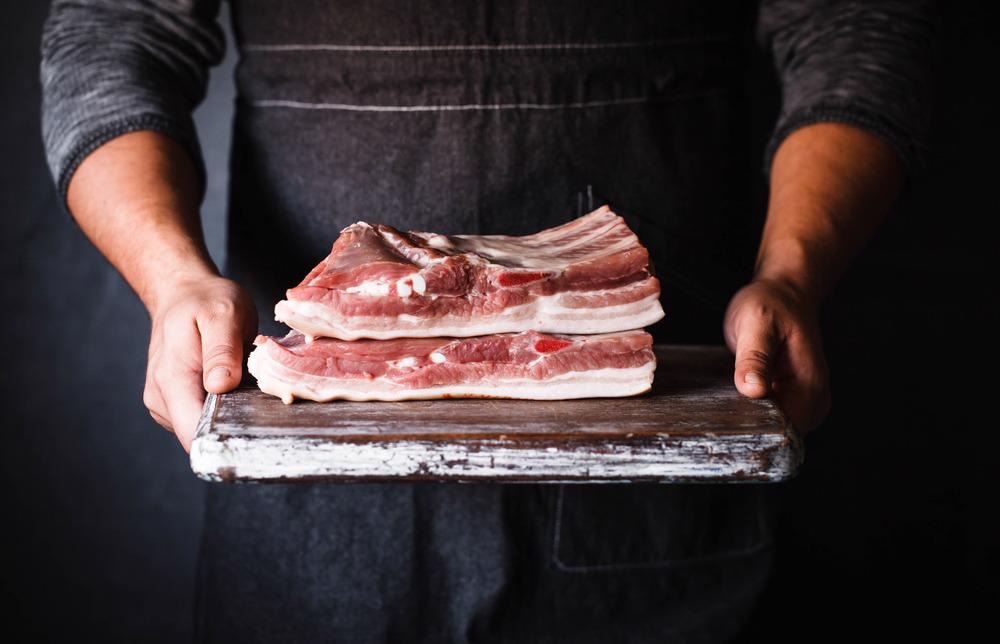
Image Credit: ShutterStock/casanisa
That meat is presented to us in a way that is not homogeneous; it is heterogeneous. And so if somebody is going to say, what is the protein level in this? The natural response is, “where do you want to know what the protein is?”
The near infrared instruments that I am going to talk about are not imaging instruments that are taking pictures and doing the analysis and then mapping things out. They are looking to give you a single value. And so that value needs to represent the product, which means we have to have some type of sample presentation.
Could you expand on how you would carry out a sample preparation?
When it comes to meat preparation, it is not hard to set up and present the meat to the instruments. You basically have to grind it; you have to homogenize it prior to the measurement, and, for that, a knife mixer is preferred.
This style of mixer homogenizes, or some people would say emulsifying, the sample. This is a very good way of preparing it.
If a grinder is used, you will get a bit of a different look to the product, but the instrument is going to make more than one measurement across that and average those. So, we will still get a decent result. But if we are looking at products that are intact, you are going to have to grind, or you are going to have to emulsify a representative part.
Getting enough of the product to be representative is important because it depends on where you take it. It is okay if the sample is from a mixer, but if you’re looking at specific cuts, then you may have to do some sort of presentation or processing for the presentation.
Now, when we make our measurements with near infrared, there are two different ways of making the measurement and two different ways that I will talk about later on.
How would you prepare a meat sample for human consumption?
When preparing a meat sample for human consumption, you should be looking at light transmission, if possible. So the light is coming through a sample and then down to something that spaces out the wavelengths. That is how a near infrared spectrometer works.
The spectrometer has magnets that enable the sample to rotate. The sample rotates through the instrument in order to get a measurement. It is a great technique as it enables a lot of samples to be measured. So, the grind doesn’t have to be perfect.
What also makes this a great way of measuring samples is that there is no mechanical part here that needs to be cleaned. When dealing with meat products, cleaning and sanitation are very important. So having a flat surface that uses magnets is much more attractive than having any sort of mechanical dish, gear or anything like that.
The sample background, the light that is coming out of the lamp, needs to be represented. And that background is measured as part of each individual measurement.
Could you briefly explain how a near infrared spectrometer works?
A near infrared spectrometer uses diode array technology, and the thing that separates one from another is the wavelength region. The wavelengths that these diode arrays use range from 850 nanometers to 1050 nanometers. They use that region because the diode array can be made out of silicon.
Now with modern telecommunications and semiconductor technology, it’s very easy to get highly pure silicon detectors formed in whatever shape that you happen to need them. This makes this instrument affordable.
The light at those wavelengths is also very good at penetrating the sample. This is what makes the rotation and measurement through the sample possible with this type of instrument (the Model 6200 Meat Analyzer).
Compared to others in the field, this instrument is a top performance, modest price type of instrument that is made primarily from plastic.
The silicon photo diode array is also relatively inexpensive compared to other ways of taking a measurement. So, this is an instrument that is capable of making very accurate measurements but at a modest price.
This means that you can put these instruments in places where you might not consider putting a more expensive instrument: you can put them at receiving, you can put them in quality control, and they can definitely fit into smaller operations.
If you have dedicated lines, if you have a smaller operation, and you’re not one of the biggest processors in the nation, this instrument comes in at a very nice price point. If you thought you were priced out of the market, this is definitely one to look at that would better fit your size and budget.
You alluded to how accurate the instrument is. Could you tell us a little more about that?
When measuring meat, the most commonly requested items are fat, moisture and protein.
If we look at results from 500 samples taken from a wide variety of meats - poultry, beef, pork, it is all mixed in the same calibration. So, you can run any of those meats, or frankly, you can run mixed meats, and this will work fine.
If you were going to measure fish, you would need to use a different calibration. Fish tends to behave differently in its character than if we’re comparing chicken, swine and bovine.
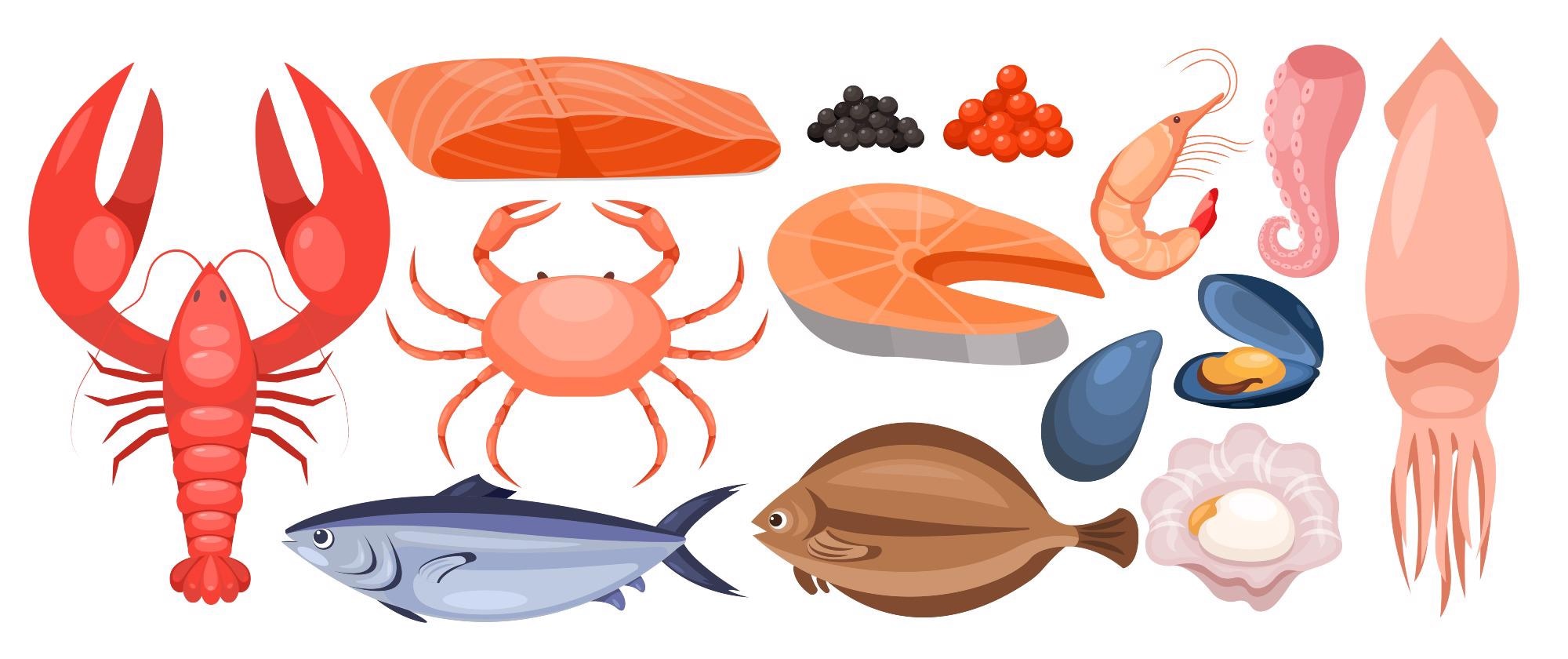
Image Credit: ShutterStock/Amanita Silvicora
This instrument gives you a measurement simultaneously from moisture, fat and protein. Depending on your product, that same instrument can also give you collagen, collagen-free protein, collagen protein ratio, percent salt or percent ash reading. These are all very important things, especially if you’re making sausage products.
The salt percentage is also a very useful thing to know. When using near infrared, a second instrument is not needed when taking salt measurements.
The salt, however, is not measured directly by near infrared. The salt is being measured because the presence of salt changes the shape of the water molecules as they dissolve the salt in the product. Once you’ve ground it up, that salt is no longer just sitting on the surface; it is pretty well associated with the molecules of the meat and of the moisture in the product. Thus, it changes those molecules, and that is what we see in order to get a salt measurement.
Therefore, as I said, this instrument is modest in price and has excellent performance.
So how should the Model 6200 Meat Analyzer be used?
You can use the Model 6200 to check incoming meat. I have seen people use this to check incoming meats for pet food. You can also use this product for incoming meat for human consumption. You can use it at the mixer when you’re trying to mix ground meat, a sausage mix or a hamburger mix. The blenders monitor how much salt has been added.
It can also be used to check final products. So essentially, you know if you got what you paid for and what you are making so that you can reduce the lean meat giveaway.
The Model 6200 can also be used to ensure a more consistent product. If a product is consistent, or if our customers like it, then they will come back and buy more. If you have a product that is inconsistent, you always run the risk that the customer is going to get one or two that do not match the rest. In this case, the consumer will start to look at products elsewhere.
Finally, it can be used to verify the quality and consistency of the product. People use it to help with payments, vendors, production, or as part of quality control on an outgoing product. Again, the fact that it is at a good price point means that you can place units in more locations.
Which model would you use to check meat for pet consumption?
When talking about meat primarily meant for human consumption, it would be the Model 6200 that we just discussed. If we are talking about an application that is either human meat products or pet food, then the DA-7250 is an excellent instrument for this.
The design of this instrument is a little different. The light comes down, the sample sits in a dish, and it magnetically rotates. But unlike the other model, the light that comes down is reflected off in the other direction.
This happens because it uses longer wavelengths. So, the light is still penetrating into the sample and coming back, but it’s not being done in transmission.
This instrument uses Honigs Regression, which is a type of regression that lets us put together different sorts of products into one calibration. So again, we can make a calibration that will work for human consumption and produce better quality pet food - i.e., meat products made from organ meat as well as regular meat.

Image Credit: ShutterStock/IriGri
This instrument has a huge protein, fat, moisture and ash range. Ash shows up more in pet food than in human food as it is normally an indicator of bone. The ash number is a measurement of quality. It identifies bone flakes and bone calcium.
The 7250 instrument can also be used for mixed meats and organs. So, for several different styles of meat cuts and organ meat, as long as you pre-processed those into the emulsion or into ground meats, this instrument will handle any product like this.
Again, it won’t deal with fish without a separate calibration because fish looks or behaves differently than poultry, pork and beef.
How would calibrate for both human and animal consumption?
We have a universal calibration for human and animal consumption, going from about 0% protein up to about 40% protein — so very lean meat down to something that is predominantly fat.
If we have some higher fat content here and there, we would probably want to add some of those to the calibration, but the Honigs Regression lets us add that without too much extra difficulty.
Honigs Regression is great as only one calibration needs to be taken. This will then be used for all products. You do not have a bunch of calibrations to maintain. You don’t have a bunch of separate biases to maintain. You just maintain the one meat calibration per constituent.
The DA-7250 instrument comes in both a plastic and stainless steel cover.
What sort of environments can the 7250 and other near infrared spectrometers be used?
The DA-7250 instrument can be used in a rough use environment. It can go into an environment where there is a risk of bleach or other material being spilled on the product as it can easily be cleaned. The stainless steel is a very nice option on the DA-7250.
What I would call at line instruments are units that are placed near where the meat processing is taking place, so samples are brought over, prepared and then placed in the instrument.
The DA-7350 is typically used for mechanically separated meat, such as chicken nuggets or a product like Slim Jim’s. The window is mounted using a tri-clover clamp, and it clamps right up against where the meat product is flowing by. The window is made out of Sapphire.
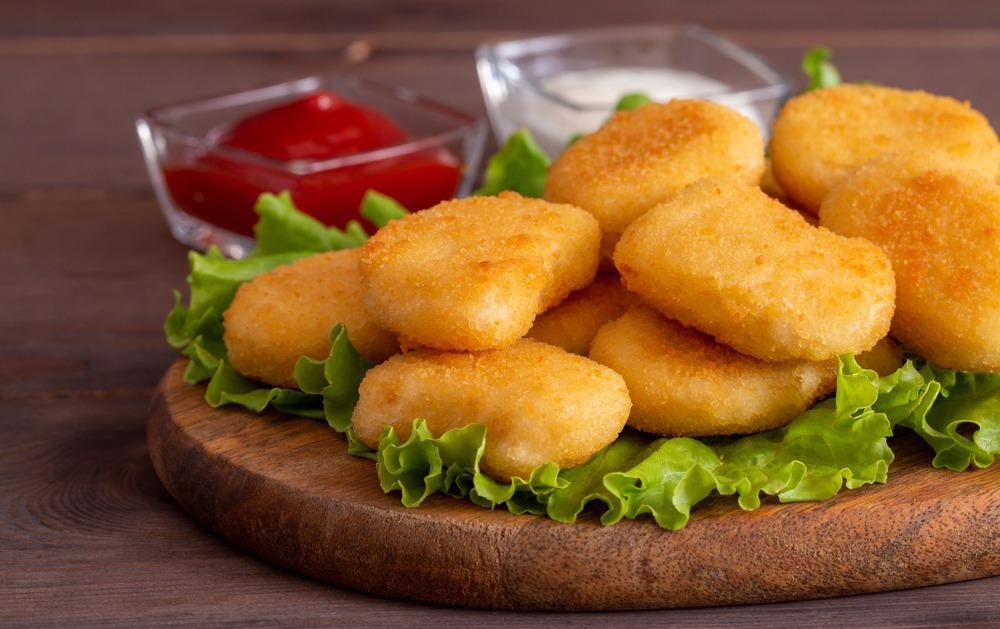
Image Credit: ShutterStock/Garry64
When you are mechanically separating the product, and it is flowing by this window, the instrument can measure the lean-to-fat ratio. This is really important as you want to be hitting your target fat numbers without going past the point where the product has a good texture or good behavior.
The Sapphire window is pretty incredible. We use Sapphire because glass is a hazard if it breaks. So, we do not want to use glass anywhere near meat production.
Sapphire does not tend to shatter the way that glass does. Sapphire tends to break the way gravel breaks; into smaller pieces without being sharp. Sapphire is food-grade approved. It can also be cleaned in place.
The DA7350 also has a camera inside, so pictures can be captured of the product as it flows by.
The DA-7250 measures wet pet food products and dried meats, as well as organ meats and cuts for human consumption.
The DA-7250 works well with meat for pet food rather than meat for human consumption as it uses cuts that are not prime cuts. However, these cuts are still made of the same basic protein, moisture, fat, salt and ash. Thus, just like the measurements worked for the other products, they work for these products.
What sort of meat would you use for animal feed?
When looking at pet food, we stop looking at the food as if it is something we might want to eat, and we start looking at it from a commercial standpoint of how much it costs. The truth of the matter is that every part of a cow, pig or chicken that can be used winds up going into something called meat and bone meal.
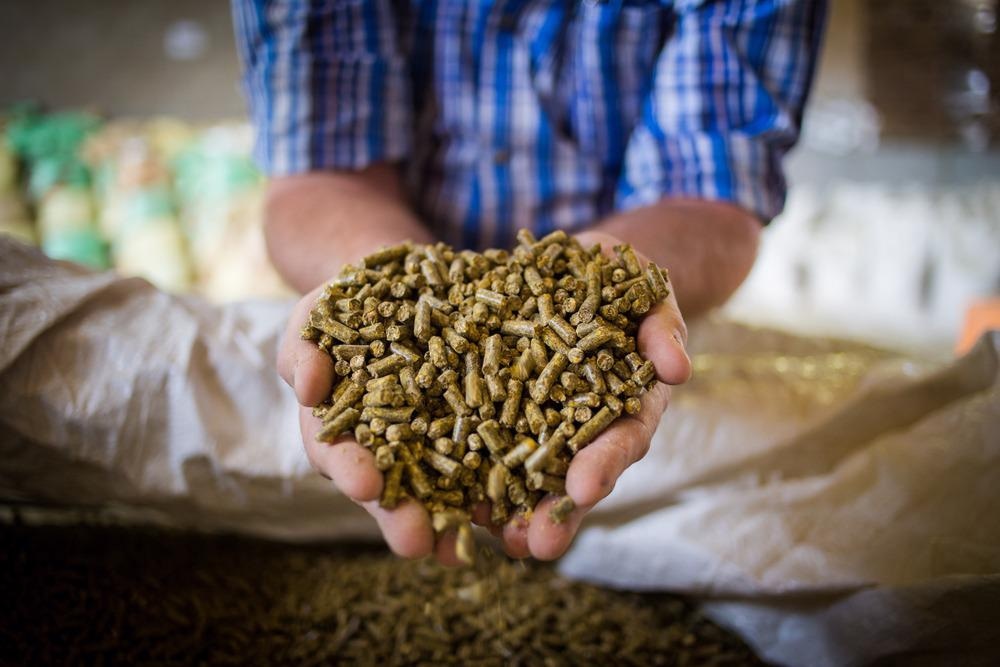
Image Credit: ShutterStock/Dewald Kirsten
Meat and bone meal goes through a process called rendering. So, a rendering facility will take that meat, cook it, separate the fat and cook off the fat to create a more pure protein.
How do you decide which meat to use for rendering?
Pretty much anything can go into a rendering process; it can be mixed animal sources combined. You can get separate lines or combined lines for poultry, swine and bovine.
The meat used can be pre or post-consumer. When chicken has not sold at the grocery store, after a couple of days, it comes back and gets rendered. Other things like fish, feather, and blood meals tend to be done separately.
These things tend to be separate, but poultry, swine and bovine sources can easily get mixed in the meat and bone meal processing. The calibrations that we use for our meat and bone meal work for mixed poultry, swine and bovine. Blood, fish and feathers need separate ones because the amino acids that make up the proteins are different in those particular sources than they are for poultry, swine and bovine.
Meat and bone meal is often bought to feed chickens, pigs or other livestock. It can also be used in pet food.
Why does analysis matter for meat and bone meal?
Meat and bone meal is generally bought and sold based on the percentage of protein, but it is classified by how much ash it contains. The more ash in the product, the more bone was scraped into the product; thus, the cheaper it will be.
We also analyze meat to find ou the metabolizable protein. We can look at a fish meal or feather meal and say, “Wow, this feather meal has a lot of protein in it.” And it does, but that protein is not metabolizable, which means that you feed it to the animal, and it’s just going to come out. It doesn’t stick.
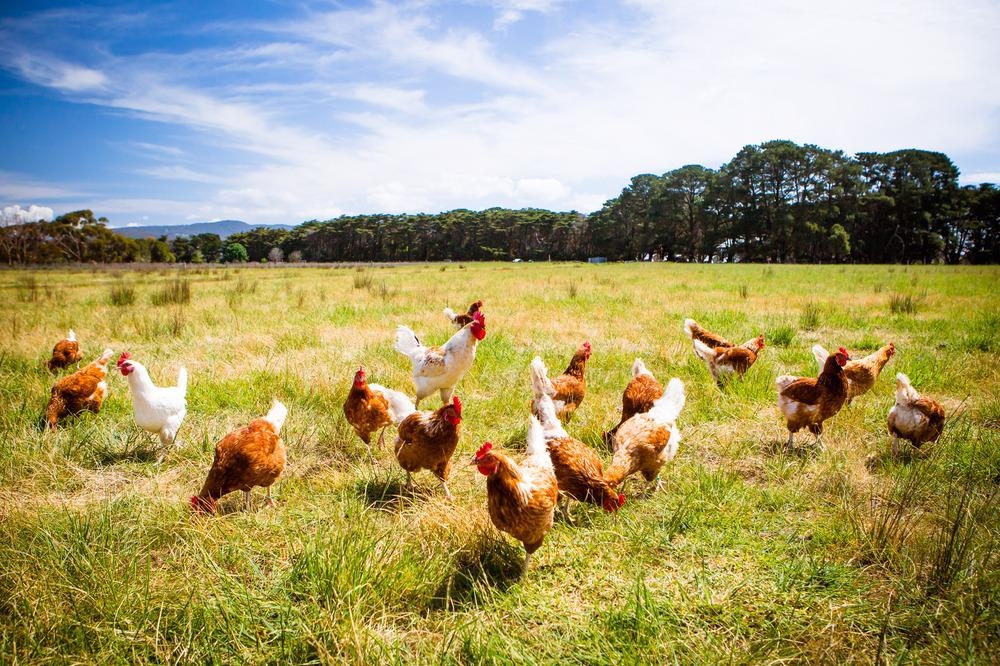
Image Credit: ShutterStock/FiledIMAGE
So metabolizable protein is a really important thing. And I don’t know if you think of chickens as being vegetarians, but if you stop and you remember that chickens are birds and birds definitely are omnivores. They will eat pretty much anything that they can fit in their mouth. So, using examples of meat and bone meal - mixed beef, poultry pork and poultry meal - you can see we’ve got protein from 40% up to the high seventies.
Protein is high in meat and bone meal because, in rendering, fat is a very profitable product, so they cook it all off. So, there is not much else to dilute out the protein in the meat and bone meal.
Can near infrared instruments measure fat, salt, collagen and other products?
Near infrared gives simple and rapid measurements. It takes longer to grind the sample than to measure it. So, in just a minute or under, measurements can be achieved to inform you how your incoming looks to know how your outgoing will then look.
The modern calibration techniques we have discussed are different from the way things used to be ten years ago. Whether we use artificial neural networks or we use Honigs Regression, these techniques let us combine many different products into a simple calibration, so the operator doesn’t have to pick the right calibration or have separate biases; you can use mixed sources. And frankly, they are all mixed sources when it comes to meat and bone meal.
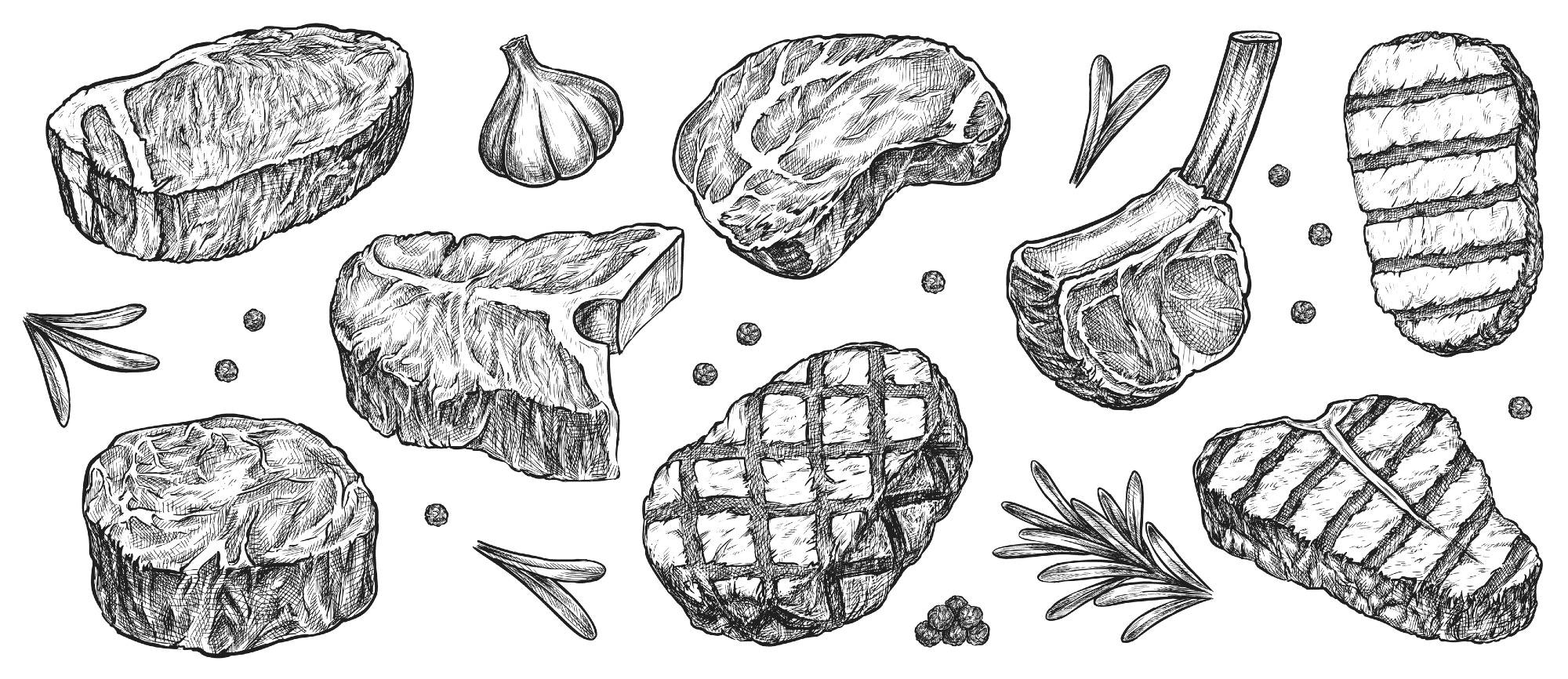
Image Credit: ShutterStock/Mind Pixell
The only question is whether you know what you have in your meats or not. Measuring meat samples is how you stop giving away the leanness or paying for a different quality than you are receiving, which is always important.
So, testing should always be taken up. When it comes to testing, knowing what you are doing is half the battle, but it is going to pay up one way or another. You will either save money on your incoming or achieve a more consistent product that will keep the customers coming back for more.
PerkinElmer makes a wide variety of products, not only measuring the pros like fat, moisture and protein, but also food safety, things like E. coli, listeria, heavy metals, pesticides, growth hormones, etc.
So, if you are in the meat processing industry, there is probably something that PerkinElmer makes that could help make your life easier. We have focused on putting together a complete product offering so that you can experience the PerkinElmer quality in any of the products that you choose.
About Dr. David Honigs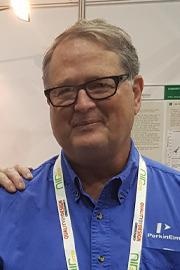
Dr. Honigs did his graduate work under joint supervision of Professor Gary Hieftje and Dr. Tomas Hirschfeld at Indiana University in Bloomington. He served as an Assistant Professor of Analytical Chemistry at the University of Washington for a few years. Following that he worked at NIRSystems (now part of FOSS) on NIR instruments. He started a company, Katrina Inc. which made process NIR instruments.
For the last almost 20 years he has worked at Perten (now Perkin Elmer) on Near Infrared Instrumentation and applications in the food industry. He has 35 research papers as listed on ResearchGate.com He has 10 issued US patents.
About PerkinElmer Food Safety and Quality
PerkinElmer Food Safety and Quality is committed to providing the innovative analytical tools needed to ensure the global supply of high-quality, safe and unadulterated foods
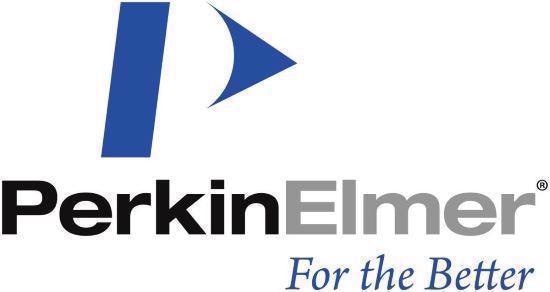
This information has been sourced, reviewed and adapted from materials provided by PerkinElmer Food Safety and Quality.
For more information on this source, please visit PerkinElmer Food Safety and Quality.
Disclaimer: The views expressed here are those of the interviewee and do not necessarily represent the views of AZoM.com Limited (T/A) AZoNetwork, the owner and operator of this website. This disclaimer forms part of the Terms and Conditions of use of this website.